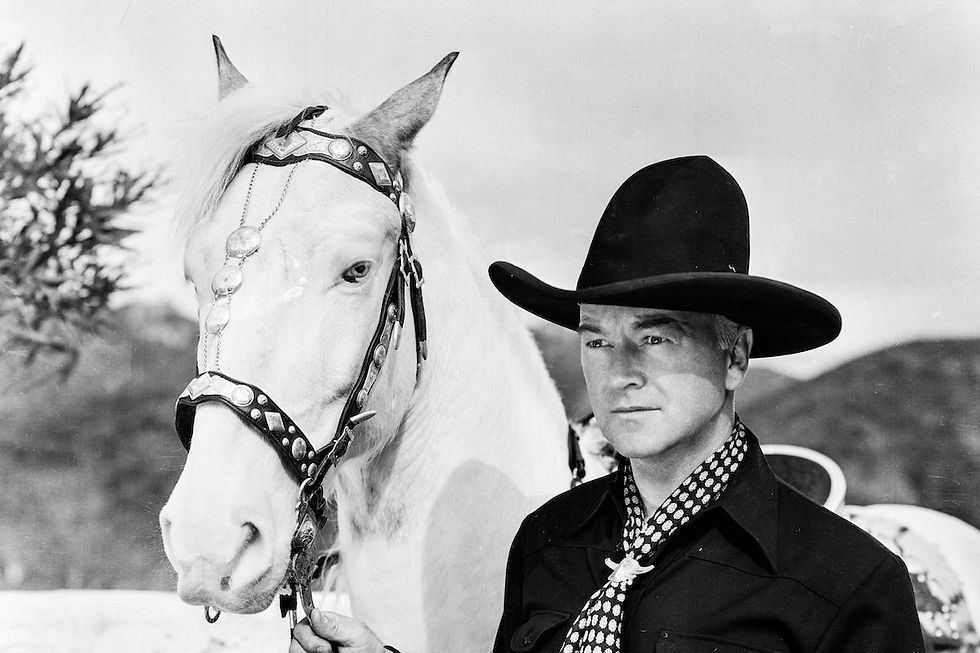Cinema Revisited: Hopalong Cassidy (1935)
- James L. Neibaur

- Nov 17, 2021
- 3 min read
Updated: Dec 5, 2021

After being a Hopalong Cassidy fan my whole life, I finally have seen the very first film in the series.
I don’t know that anyone at the time realized that this amusing little western film would spark a series of 66 movies and then a TV series that ran two years afterward, but it came to define actor William Boyd’s career. And he, of course, was fine with that.
There were two actors named William Boyd, one of whom came to be billed as William “Stage” Boyd to separate him from this actor. Both were pretty hard-living guys, and the Boyd who played Hopalong would say in later interviews, “I got blamed for everything both of us did.”
When Boyd took the title role in this Paramount B western, he had already established himself as a solid character actor who did well in westerns (he starred in the 1931 feature The Painted Desert, which is now known for being Clark Gable’s movie debut). He was actually offered another role for this movie, but wanted to play Cassidy.
Boyd would then play Hopalong for another 54 features at Paramount. When that studio stopped making the films, Boyd himself produced several more features for United Artists until the movie series finally petered out in 1948. Seeing an opportunity in television, Boyd gambled his entire savings, including mortgaging his home, and bought the rights to the character and all of the films made up to that point. He then arranged for them to be shown on TV, introducing them to a new generation of youngsters. He also started a big marketing campaign, with lunch boxes, drinking glasses, toys, etc. It made him a millionaire. Boyd then produced two years of new Hopalong Cassidy TV shows, concluding in 1954 when he retired except for occasional live appearances, which he continued until his death in 1972. After his passing, Boyd's widow, actress Grace Bradley, continued to support and promote the Hopalong Cassidy movies until she died on her 97th birthday in 2010.
The Hopalong Cassidy saga is one of the great successes of showbiz history, so my having seen most of the films, but not the very first one, made a difference. It was pleased to discover that the plot of the movie, about outlaws, water rights, conflicts among men and women, was comfortably standard western fare. It is the character and performances that make a difference here.
It is fairly easy to see why this movie made the impact it did. A solid, compact western action film, this first movie benefits greatly from William Boyd’s command of the title role. He does not have classic good looks, but is quite ordinary. He doesn’t ooze charisma, nor is he a powerful looking man. Yet, Hopalong Cassidy has a stern command, and a distinct presence. He is affable and laughing when comfortable and happy, but tough and uncompromising when confronted. There are scenes when he disdainfully laughs off real threats, making him appear more powerful than his physical presence allows. Dressed in all black, sitting majestically atop a beautiful white horse (Topper), Boyd benefits great from a cast that includes western sidekick stalwart Gabby Hayes, and young whippersnapper actor James Ellison, both of whom also continued with the series for a while.

This is the film where the character, called Bill Cassidy, becomes known as Hopalong when he is injured and walks with a cane. He jokingly calls himself Hopalong in an amused exchange with Gabby Hayes.
Although a B movie, it was still made for a major studio, and thus was more expansive and had more polish than the low budget westerns also popular at the time. Boyd could not sing like Gene Autry (whose western film series debuted the year before) or Roy Rogers (who began his starring series a few years later), nor did he have the rugged authenticy of John Wayne, Tim McCoy, or Buck Jones. But his presentation of Cassidy as a clean living cowboy hero who never smoked, drank, or swore, defined the movie cowboy stereotyope until the Sergio Leone spaghetti westerns of the 1960s redefined the concept.
This film’s director, Howard Bretherton, was not a stylist, but was a B movie specialist, keeping action-packed movies under budget for many of the poverty row studios. He would direct many more westerns, including a couple of other Hopalong entries, in a career that ran from the silent era into television.
This movie is also known under a later retitle, Hopalong Cassidy Enters. It is fast paced, entertaining, and significant to have ignited one of the most important western films series that ran from the 30s into the 50s.
Comments